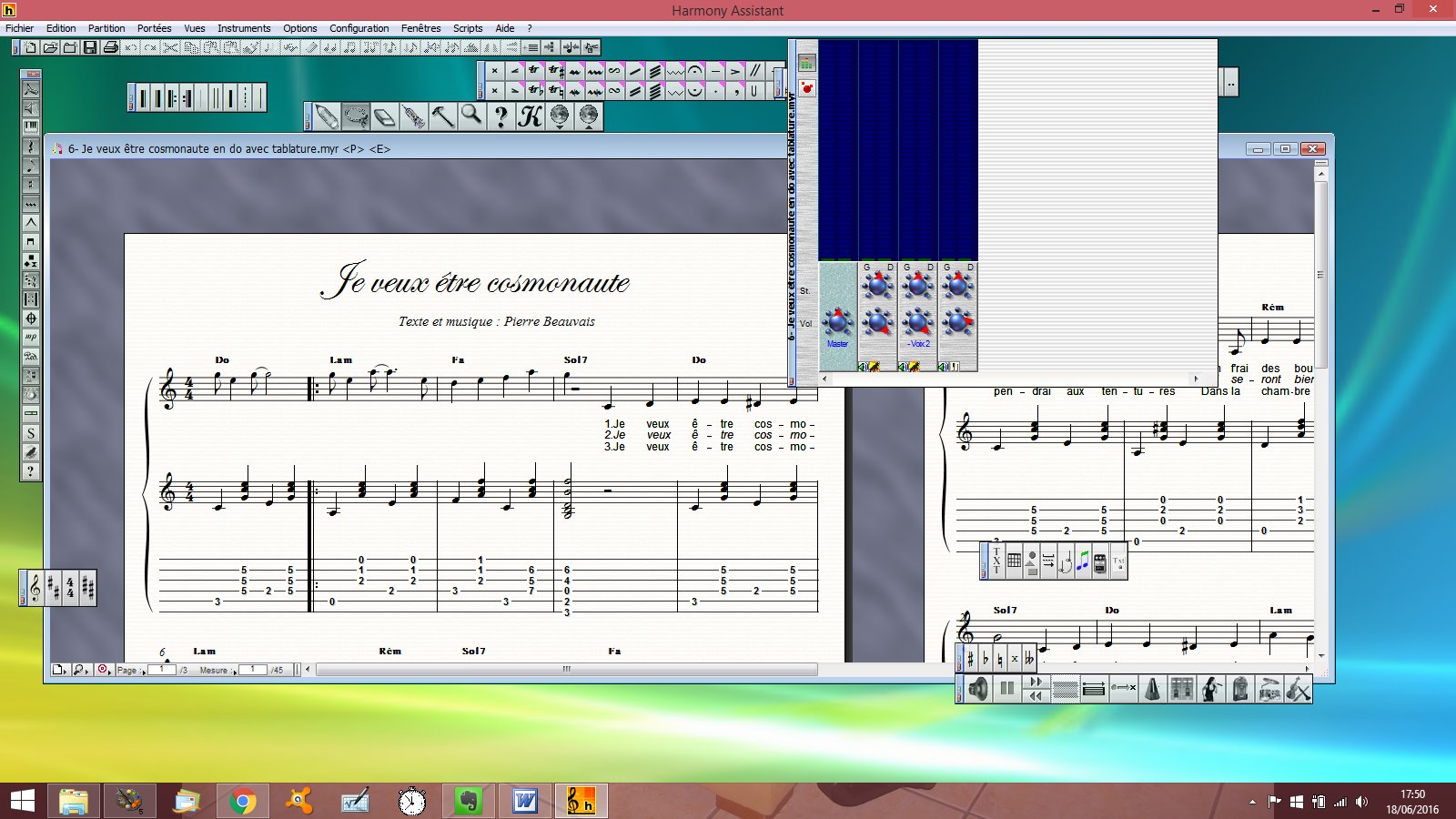
- #HARMONY ASSISTANT METRIC MODULATION SERIAL#
- #HARMONY ASSISTANT METRIC MODULATION SOFTWARE#
- #HARMONY ASSISTANT METRIC MODULATION SERIES#
Expanding the Row: Transposition and Canonic Transformations.Historical Context: The Need for Something New.Vocal Registers and Ranges: A Quick Review.Writing Microtones for Strings, Winds, and Brass.John Luther Adams Alois Haba, Charles Ives, Ezra Sims, Enno Poppe, Jon Catler The Microtonal Pioneers: Ben Johnston La Monte Young Harry Partch.
#HARMONY ASSISTANT METRIC MODULATION SERIES#
Temperaments, Tunings, and the Harmonic Series.Extended Techniques for Harp and Accordion.More String Effects: Pizzicatos, Bow Techniques, Beyond the Fingerboard.Writing for Strings: Expanding Harmonics.Lesson 1: Extended Techniques for Strings, Winds, and More Create a final piece of music that reflects your personal and unique take on the concepts covered in the course.Be capable of identifying several contemporary musical styles just by listening.
#HARMONY ASSISTANT METRIC MODULATION SOFTWARE#
Compose your first computer-assisted composition and learn about technology-based techniques developed by movements such as Spectralism and Musique Concrète using ad hoc software. Compose with "pure sounds" and use technology to create your first collage piece. Write a tonal piece informed by the most recent uses of tonality.  Implement music quotations in your own music and explain postmodern music and aesthetics. Experiment with meter and rhythm, including metric modulation. Compose and demonstrate the key techniques of process-based music, such as minimalism.
Implement music quotations in your own music and explain postmodern music and aesthetics. Experiment with meter and rhythm, including metric modulation. Compose and demonstrate the key techniques of process-based music, such as minimalism. #HARMONY ASSISTANT METRIC MODULATION SERIAL#
Acquire the main techniques of serial music and compose a serial piece.
 Discover how writing for voice has evolved in the last few decades and experiment with some techniques using your own voice. Experiment with microtonality, scales and chords beyond the equal temperament, and notate and play them. Compose using tonal and non-tonal material, adding more extended techniques to your compositional palette. You will become familiar with the compositional innovations of Igor Stravinsky, Arnold Schoenberg, Anton Webern, Alban Berg, Gyorgy Ligeti, Pierre Boulez, Karlheinz Stockhausen, George Crumb, Luciano Berio, Steve Reich, Terry Riley, Helmut Lachenmann, Mario Davidovsky, and Sofia Gubaidulina.īy the end of this course, you will be able to: Finally, there will be a set of lessons on technology, allowing you to get a glimpse of computer-assisted composition with the help of a software tool developed especially for this course. The third unit will focus on the relationship between tradition and tonal music, focusing on those composers with an interesting relationship to the past, such as the post-modernists. The second unit of this music composition course will cover new compositional systems and styles from the early 1920s through the modern day, such as serialism and minimalism. You will start where you left off in OCOMP-285: Contemporary Techniques in Music Composition 1 by expanding your knowledge of extended techniques for traditional instruments and voice. The lesson material is presented through listening exercises, analysis, and weekly composition projects.īecause of the complexity and fragmentation of the curriculum, this course is organized in units. In addition, you will gain enhanced listening skills to identify and appreciate new musical styles, and be capable of implementing these skills in your writing, enriching your capacity to express yourself in this intellectually stimulating musical idiom. Upon completion of this music composition course, you will have a solid knowledge of modern instrumental writing and competence using twentieth century techniques in composition.
Discover how writing for voice has evolved in the last few decades and experiment with some techniques using your own voice. Experiment with microtonality, scales and chords beyond the equal temperament, and notate and play them. Compose using tonal and non-tonal material, adding more extended techniques to your compositional palette. You will become familiar with the compositional innovations of Igor Stravinsky, Arnold Schoenberg, Anton Webern, Alban Berg, Gyorgy Ligeti, Pierre Boulez, Karlheinz Stockhausen, George Crumb, Luciano Berio, Steve Reich, Terry Riley, Helmut Lachenmann, Mario Davidovsky, and Sofia Gubaidulina.īy the end of this course, you will be able to: Finally, there will be a set of lessons on technology, allowing you to get a glimpse of computer-assisted composition with the help of a software tool developed especially for this course. The third unit will focus on the relationship between tradition and tonal music, focusing on those composers with an interesting relationship to the past, such as the post-modernists. The second unit of this music composition course will cover new compositional systems and styles from the early 1920s through the modern day, such as serialism and minimalism. You will start where you left off in OCOMP-285: Contemporary Techniques in Music Composition 1 by expanding your knowledge of extended techniques for traditional instruments and voice. The lesson material is presented through listening exercises, analysis, and weekly composition projects.īecause of the complexity and fragmentation of the curriculum, this course is organized in units. In addition, you will gain enhanced listening skills to identify and appreciate new musical styles, and be capable of implementing these skills in your writing, enriching your capacity to express yourself in this intellectually stimulating musical idiom. Upon completion of this music composition course, you will have a solid knowledge of modern instrumental writing and competence using twentieth century techniques in composition. 
Any music student interested in composing in new forms and genres will find the achievements of these artists worthy of study. Music for films, commercials, and video games are now filled with these effects, granting composers of every kind of media a larger palette to express their ideas.
Interdisciplinary Music Studies (Create Your Own Major). Music Composition for Film, TV, and Games. Electronic Music Production and Sound Design. 
Music Theory, Harmony, and Ear Training.








 0 kommentar(er)
0 kommentar(er)
